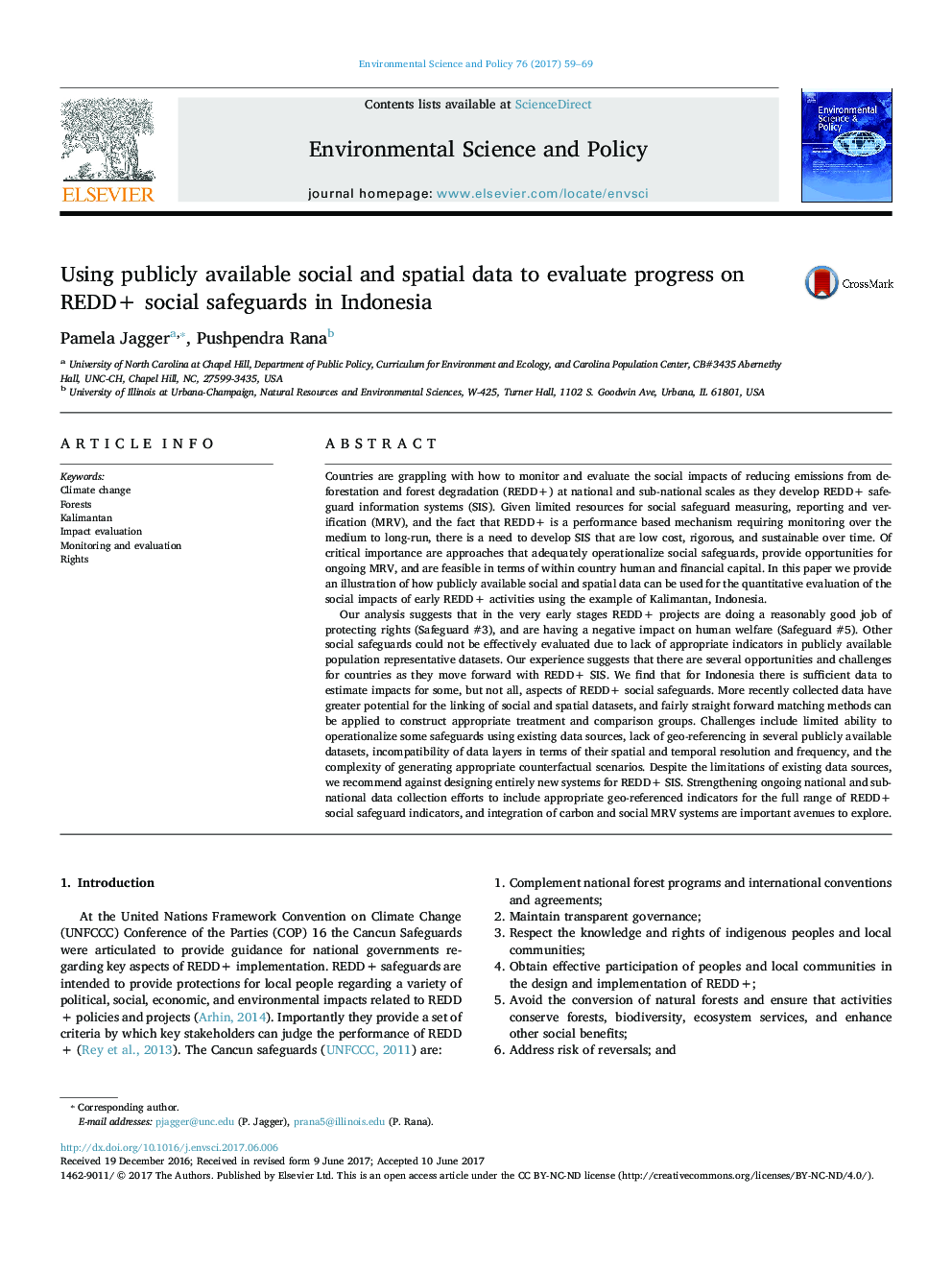| کد مقاله | کد نشریه | سال انتشار | مقاله انگلیسی | نسخه تمام متن |
|---|---|---|---|---|
| 5115714 | 1485032 | 2017 | 11 صفحه PDF | دانلود رایگان |
عنوان انگلیسی مقاله ISI
Using publicly available social and spatial data to evaluate progress on REDD+ social safeguards in Indonesia
دانلود مقاله + سفارش ترجمه
دانلود مقاله ISI انگلیسی
رایگان برای ایرانیان
کلمات کلیدی
موضوعات مرتبط
مهندسی و علوم پایه
مهندسی انرژی
انرژی های تجدید پذیر، توسعه پایدار و محیط زیست
پیش نمایش صفحه اول مقاله

چکیده انگلیسی
Our analysis suggests that in the very early stages REDD+ projects are doing a reasonably good job of protecting rights (Safeguard #3), and are having a negative impact on human welfare (Safeguard #5). Other social safeguards could not be effectively evaluated due to lack of appropriate indicators in publicly available population representative datasets. Our experience suggests that there are several opportunities and challenges for countries as they move forward with REDD+ SIS. We find that for Indonesia there is sufficient data to estimate impacts for some, but not all, aspects of REDD+ social safeguards. More recently collected data have greater potential for the linking of social and spatial datasets, and fairly straight forward matching methods can be applied to construct appropriate treatment and comparison groups. Challenges include limited ability to operationalize some safeguards using existing data sources, lack of geo-referencing in several publicly available datasets, incompatibility of data layers in terms of their spatial and temporal resolution and frequency, and the complexity of generating appropriate counterfactual scenarios. Despite the limitations of existing data sources, we recommend against designing entirely new systems for REDD+ SIS. Strengthening ongoing national and sub-national data collection efforts to include appropriate geo-referenced indicators for the full range of REDD+ social safeguard indicators, and integration of carbon and social MRV systems are important avenues to explore.
ناشر
Database: Elsevier - ScienceDirect (ساینس دایرکت)
Journal: Environmental Science & Policy - Volume 76, October 2017, Pages 59-69
Journal: Environmental Science & Policy - Volume 76, October 2017, Pages 59-69
نویسندگان
Pamela Jagger, Pushpendra Rana,